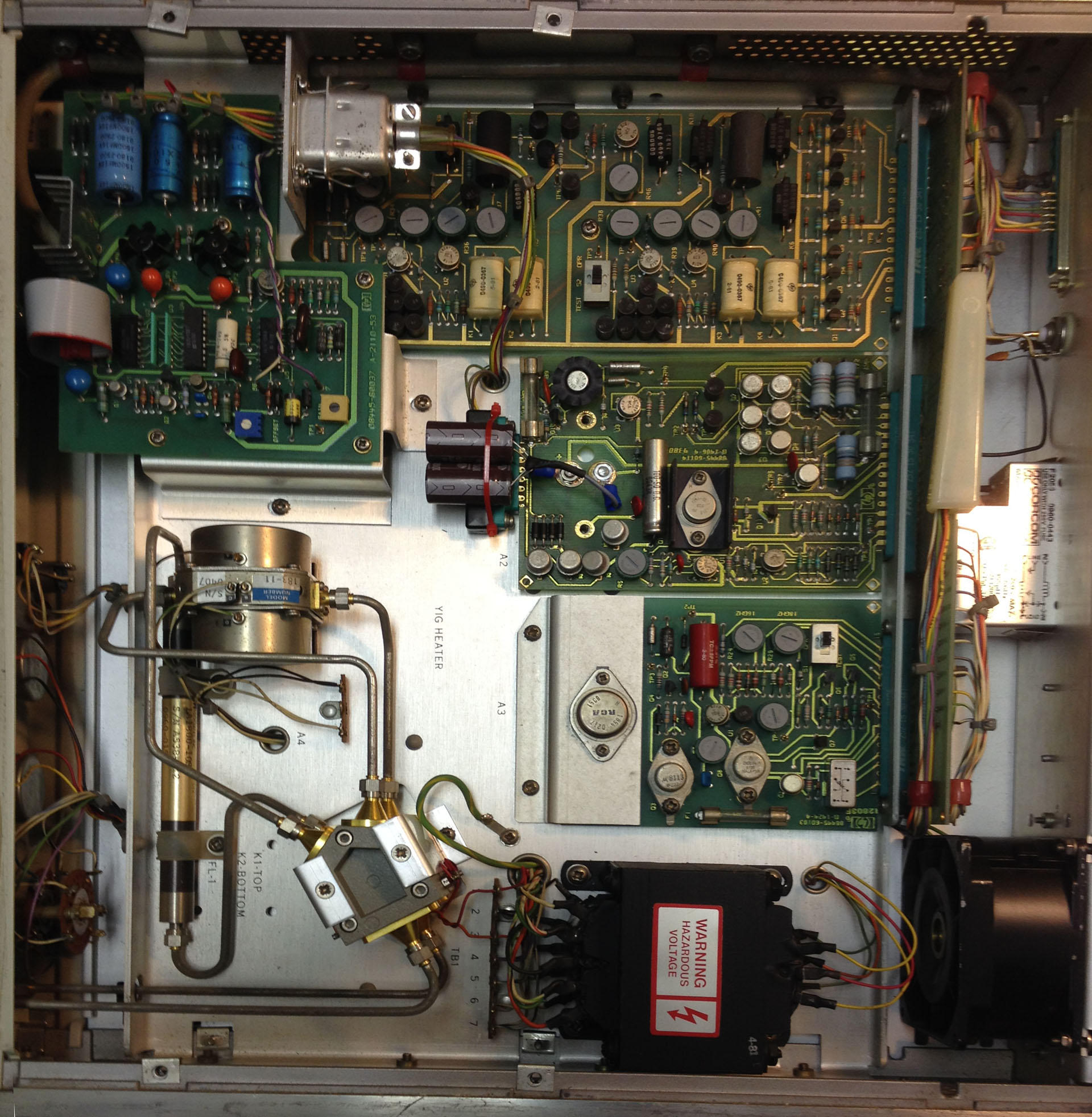Last week an electrolytic Capacitor had failed in a 70’s measuring instrument (HP 8445B preselector). The capacitor in question is a smoothing capacitor in the power supply assembly. It stopped smoothing, but shorted the whole supply out. Poof, fuse blown. Thank goodness for that!
Not much time that moment, so something for the next day. It happens more often than not that I get spontaneous ideas while showering and so it did this time: the problem arose early in the afternoon, could the mains voltage have been (too?) high? Recently, the neighbour had installed additional solar panels on the garage roof (AKA SolarEdge pirate transmitters, S9+10 QRM daytime).
The HP instrument was (still) set to 220 V and with a clearly higher voltage, the DC voltage over the capacitor could get close to the rating of 50 V. A few times I measured the mains voltage (with different meters to reduce errors). Hmm, around 13.00 hrs approx. 245 V. So indeed considerably higher. It has to be said that we had a mains voltage of 220 V, which was changed a number of years ago to 230 V (thanks to the wonderful ideas of the EU).
I found on the internet that according to the local requirements, inverters should switch off at 253 V (=230 V +10%). So the voltage could even go higher than 245 V. In my opinion, this is one of the many negative consequences of the climate hysteria. Add heat pumps and overnight charging of E-cars and I already see the voltage fluctuating violently between 230 V + and – 10%. Not to mention grid pollution. What happens if inverters start switching off en masse and then on again? Can an avalanche effect occur? I am no expert in this field, but it seems like a potential problem.
On forums about vintage radios, I read the advice to set old radios to 240 V or else to use a series resistor to keep the whole thing intact. This is why I changed the setting of a recently bought Philips Bi-Ampli radio to 245 V (B5X34, real stereo receiver with slanted scale).
253 V is about 15% higher than 220 V and so the filament voltage of electron tubes goes up. In the case of E type tubes for example, the voltage rises from 6.3 to approx. 7.25 V and that is likely to cause problems (and expensive “new” tubes). Also other voltages can become too high for the components.
The bottom line is that it is very wise to take a close look at classic devices and if possible, set them to 240 V for example, or possibly use a Variac or a series resistor. My Variac is under a table at the moment but it will get a more accessible location.
Of course, all older equipment will be inspected, such as converting the voltage selector and so on. A kind of new “climate proof”
This is the quick and dirty repaired HP 8445B with top cover open:
The 1,300 uF capacitor is replaced by two 1,000 uF caps with 65 V rating. After setting the unit to 240 V, the unregulated voltage is well below 40 V.
By the way, the instrument is a piece of superior craftsmanship! Notice the coaxial relay for example. Up to 18 GHz, latching. The gold tube is the 2 GHz low pass filter and the cylinder is the tracking YIG filter.
My 8445B has options 002 and 003. With these 2 options, the total price was around $ 3,500 in 1977.

